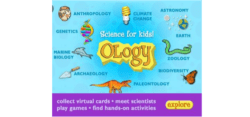Decorate, shatter, and piece together your own pottery artifact!
Archaeologists uncover all kinds of artifacts among ancient ruins, like ornate jewelry, simple baskets, and stone tools. One of the most common items found at archaeological sites is pottery, or objects made of clay. Looking at a single pot might tell you how old it was or how it was made. Looking at a group of pots might tell you how a society was organized.
Today, we usually think of pottery as decorative bowls and vases. But in ancient times, pottery was used to make many everyday things, such as dishes, cooking pots, and jars for storing food. Pottery was also used to make precious items, from sacred statues to musical instruments, like flutes.
There’s another reason why pottery is a common discovery: it doesn’t disintegrate or decay as easily as things made of wood or cloth. Sometimes pottery is found in one piece, especially when it’s found in a burial or offering. Most of the time, pottery is found broken into many pieces.
It can be a big challenge putting all the pieces back together, especially when some pieces are missing.
Archaeologists read the parts like pieces of a puzzle. They can tell which pieces go together by their shapes and colors.
As you design your flowerpot, imagine archaeologists of the future finding it. What would it tell them about you?




